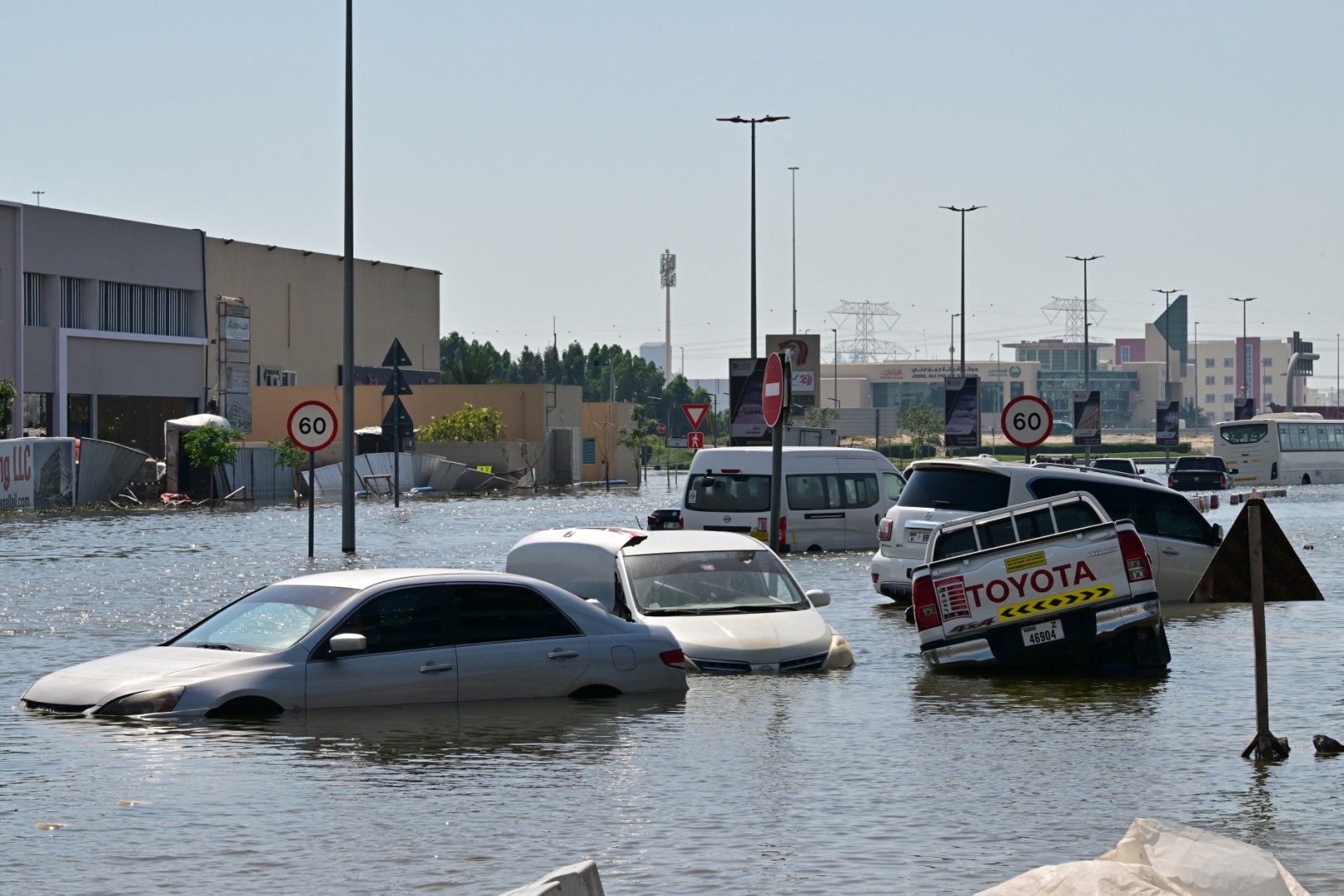
Cloud seeding did not cause Dubai floods: scientists
- This article is more than one year old.
- Published on June 6, 2024 at 03:49
- Updated on October 15, 2025 at 18:27
- 2 min read
- By Charlotte STEENACKERS, AFP Netherlands
- Translation and adaptation AFP Hong Kong
Scientists said record downpours that lashed the United Arab Emirates in April were most likely exacerbated by global warming, contrary to social media posts that pointed to cloud seeding as the culprit. The Emirati meteorological centre said it did not perform seeding operations during the floods.
"Due to the excessive use of silver iodide to create artificial rain, Dubai saw its heaviest rainfall in a single day since meteorological records began in 1949," read a simplified Chinese post on Weibo on April 18, 2024.
Artificial rainmaking usually involves planes seeding clouds with silver iodide to provoke a downpour.
The UAE is one of the world's most arid countries and has for years used aircraft for cloud seeding to artificially produce rain.

More than 20 people died in Oman and four in the United Arab Emirates as floods battered the oil-rich countries in April.
The record rains -- the heaviest in the UAE since records began 75 years ago -- flooded homes, roads and malls and forced Dubai airport to cancel more than 2,000 flights.
The Weibo hashtag "artificial rainfall causes flooding in Dubai" was viewed more than three million times, while posts blaming cloud seeding for the downpours made the rounds globally in languages including English, French, Spanish, Greek, Dutch and Korean.
A representative for the UAE's National Center of Meteorology told AFP on April 22 it "didn't conduct any seeding operations during this event".
Meanwhile, climate scientists said the deluge was most likely exacerbated by global warming.
'Misleading'
Friederike Otto, a climatologist at the Imperial College London and co-lead of World Weather Attribution (WWA) group said it was "misleading" to focus on cloud seeding.
"The heaviest rainfall in Dubai for 75 years didn't happen because of cloud seeding," she told AFP. "When we talk about heavy rainfall, we need to talk about climate change."
Climate change driven by human-emitted greenhouse gases makes extreme weather events more frequent and intense.
A warmer atmosphere holds more moisture, which can result in heavy rains and flooding.
A WWA study compiled by 21 international researchers found global warming "most likely" exacerbated the intense rains that caused the floods in the UAE and Oman (archived link).
Extreme rainfall has become 10-40 percent heavier in the region during El Nino years, the group said -- referring to the naturally occurring climate phenomenon that is associated with heavier rainfall in parts of the world (archived link).
The WWA added that cloud seeding would not have impacted the record rainfall.
"Given the huge size of the storm system, massive rainfall would have fallen regardless of whether (cloud seeding) operations had been carried out," it said.
Roelof Burger, professor of Geo- and Spatial Sciences at South Africa's North-West University, said it was "very unlikely" the downpours could have been caused by cloud seeding with small aircraft.
"This was such a heavy rainfall system there was no need for cloud seeding at all," he told AFP.
The storm was a "very large rain system" with extremes not only in Dubai but also Oman, Iran and Saudi Arabia, he added.
AFP has debunked more misinformation about climate change here.
This story was updated to correct metadata.October 15, 2025 This story was updated to correct metadata.
Copyright © AFP 2017-2026. Any commercial use of this content requires a subscription. Click here to find out more.
Is there content that you would like AFP to fact-check? Get in touch.
Contact us




